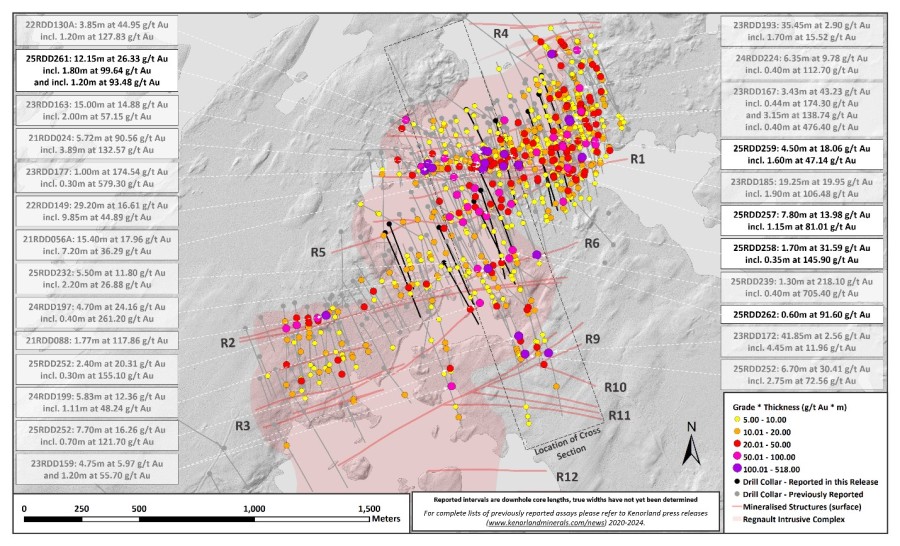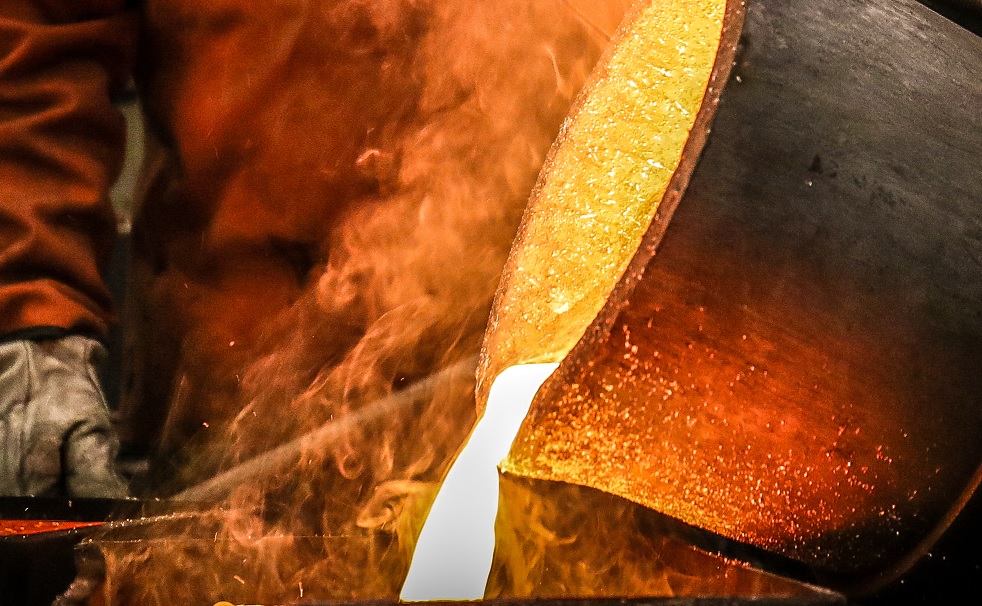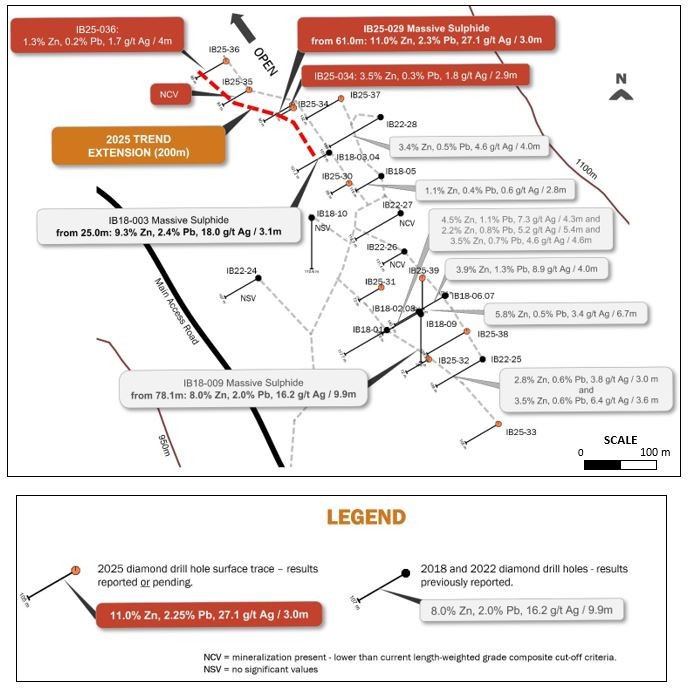SASKATOON, SK, March 6, 2017 /CNW/ - George H. Read, P. Geo., Senior Vice President Exploration and Development of Shore Gold Inc. ("Shore" or the "Company") is pleased to announce that Shore has successfully completed significant aspects of test work towards the Updated Feasibility Study on the Star-Orion South Diamond Project. The work completed in recent months includes: X-ray Transmission ("XRT") recovery of diamonds from Star pyroclastic kimberlite; ore processing data review, diamond parcel characterization, kimberlite particle size analysis and overburden removal investigations. These programs investigate the use of new technology for the efficient excavation of the open pit and improvements to the flow-sheet of the diamond processing plant, while simultaneously reducing pre-production capital costs and the time to initial diamond production.
Autogenous Mill Test Work
As previously reported, 38 tonne sample of Star Early Joli Fou ("EJF") pyroclastic kimberlite was processed by SGS Canada Inc. at their milling facilities in Lakefield, Ontario. Prior to the 2011 Feasibility Study ("FS") autogenous ("AG") milling tested had only been conducted on Orion South EJF kimberlite breccia and the FS had recommended that the AG milling test be expanded to include the significantly harder EJF pyroclastic kimberlite. The AG mill test work produced 31 tonnes of milled product recovered between -32+1 millimetres. All -1.0 millimetre material reported to waste. This test work and scale up analysis has indicated that AG milling is the appropriate method of ore treatment for diamond liberation under large throughput conditions of some 45,000 tonnes per day.
XRT Diamond Recovery Test Work
Some 2.8 tonnes of AG milled product was shipped to the test facilities of TOMRA Sorting GmbH ("TOMRA") in Wedel, Germany for diamond recovery test work using the TOMRA dual energy X-ray transmission (DEXRT) full-scale sorter. XRT sorters are able to discriminate individual particles in the feed through sorter, based on their degree of x-ray absorption. The AG milled product was screened into the following size fractions: -32+16 millimetre, -16+8 millimetre and -8+4 millimetre, which were each spiked with specific numbers of vendor supplied natural diamonds, graphite tracers and Shore's diamonds, processed through the XRT sorter. Tests were completed at operational throughputs (presently up to 120 tonnes per hour) with all diamonds and tracers being recovered down to 4 millimetres, with very low concentrate yields. The results of the test showed that XRT is viable as a replacement, for +8 millimetre fractions, for dense media separation in the re-design of the process plant, potentially reducing capital costs of the plant, and simplifying the overall flow sheet, leading to reduced operating costs and a smaller environmental footprint. TOMRA engineers are currently developing XRT sorters for use in final recovery, with proposed capability of recovering diamonds down to +2 millimetres from Dense Media Separator ("DMS") concentrate.
Ore Processing Data Review
Shore and DRA Americas Inc. ("DRA") have commenced a detailed review of ore processing data in preparation for a redesign of the diamond processing plant flow sheet, particularly to incorporate new technology such as XRT diamond sorters, laser diamond sorters and near infra-red ("NIR") waste rock sorters. In addition, DRA have recently been contracted to conduct a detailed review of all autogenous milling, comminution and liberation testwork previously conducted by Shore and contractors on kimberlite samples for diamond liberation.
Diamond Parcel Characterization and Kimberlite Particle Size Analysis
Work is currently underway at the Saskatchewan Research Council ("SRC") to investigate new X-ray recovery sorting algorithms to optimize the recovery of diamonds less than 8 millimetres. Smaller diamonds (-8 millimetre) will probably be recovered using a combination of X-ray fluorescence sorters and grease and this work will assist in understanding the proportion of low X-ray luminescence diamonds that will need to be recovered using grease. Developments in X-ray sorting technologies will be used to reduce costs the final recovery section of Shore's Processing Plant in an updated Feasibility Study. Additional processed kimberlite settling testwork is currently underway at the SRC to investigate the hydrodynamic properties of the -1 millimetre fine material that will be deposited in the Processed Kimberlite Containment Facility ("PKCF") of the Project.
Overburden Removal Investigations
Takraf GmbH has been engaged to investigate the site conditions and geotechnical properties of the till to determine the suitability of the overburden for removal via bucket wheel excavator. The geotechnical properties of the sand and clay will also be investigated to determine if this material is better suited for excavation via bucket wheel, as opposed to the current thoughts of using large dozers with dozer traps.
Senior Vice President Exploration and Development, George Read, states: "Work has been completed and is active on a number of fronts towards the Updated Feasibility Study. This Updated Feasibility Study will be based on the 55.4 million carat Revised Resource Estimate completed in 2015. Capital and operating cost savings are possible through the application of proven technology to the overburden removal and a redesign of the diamond processing plant, principally using XRT technology for recovery of diamonds from the +8 millimetre size fractions."
The Star-Orion South Diamond Project is located in central Saskatchewan some 60 kilometres east of the city of Prince Albert. The Project is in close proximity to established infrastructure, including paved highways and the electrical power grid, which provide significant advantages for future mine development. The Technical Report on the Revised Resource Estimate for the Star-Orion South Diamond Project dated November 9, 2015 provided an updated Mineral Resource Estimate for the Star and Orion South kimberlite deposits: Indicated Mineral Resource of 393 million tonnes containing 55.4 million carats of diamonds at a weighted average price of US$210 per carat. In addition to the Indicated Mineral Resource Estimate, the Star and Orion South Kimberlites include Inferred Resources containing 11.5 million carats.
All technical information in this press release has been prepared under the supervision of George Read, Senior Vice-President of Exploration and Development, Professional Geoscientist in the Provinces of Saskatchewan and British Columbia, and Mark Shimell, Project Manager, Professional Geoscientist in the Province of Saskatchewan, who are the Company's "Qualified Persons" under the definition of NI 43-101.
Shore is a Canadian based corporation engaged in the acquisition, exploration and development of mineral properties. Shares of the Company trade on the TSX Exchange under the trading symbol "SGF".





